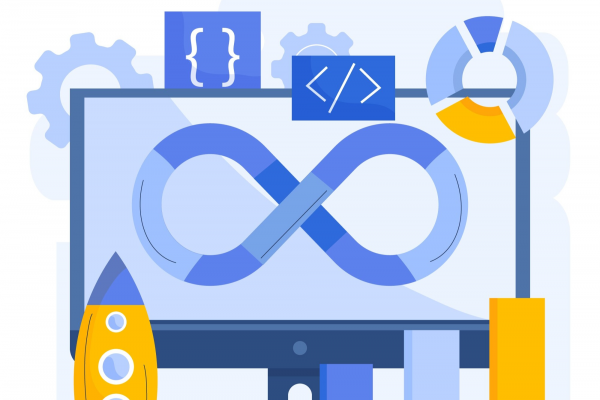As organizations rapidly adopt DevOps methodologies to enhance agility and efficiency, integrating cybersecurity into DevOps pipelines—often called DevSecOps—is essential to safeguarding software integrity and data privacy. With cyber threats evolving in both sophistication and frequency, building security directly into the DevOps workflow can be a game-changer for organizations aiming for robust, secure development practices. Here’s a look at the best practices for seamlessly incorporating cybersecurity into DevOps pipelines to ensure a secure software development lifecycle.
1. Adopt a “Shift-Left” Mindset
The “shift-left” approach emphasizes integrating security at the earliest stages of development. This means involving security teams in the design and planning stages, instead of waiting until testing or deployment. Shifting left allows developers to address vulnerabilities early, which reduces the time and cost associated with fixing security issues post-production.
Practical Tips:
- Conduct regular code reviews and static analysis at the beginning of the development cycle.
- Train developers on secure coding practices, enabling them to recognize and address potential vulnerabilities early on.
2. Automate Security Testing
Automation is the backbone of DevOps, and it should be extended to include security testing. Automated security testing, using tools like Static Application Security Testing (SAST) and Dynamic Application Security Testing (DAST), ensures that code is continuously scanned for vulnerabilities without disrupting the workflow. This practice identifies security flaws in real time, allowing teams to remediate them before they can impact the software.
Practical Tips:
- Integrate SAST and DAST tools into CI/CD pipelines to catch security flaws at both the code and application levels.
- Use automated tools to check for common vulnerabilities (such as those listed in the OWASP Top 10) and ensure code compliance with industry standards.
3. Use Infrastructure as Code (IaC) with Security in Mind
IaC is a practice that enables organizations to manage and provision infrastructure through code, making it more consistent and repeatable. However, like application code, IaC can also introduce vulnerabilities if not properly managed. By integrating IaC security checks into DevOps, teams can prevent misconfigurations and enforce secure configurations across environments.
Practical Tips:
- Use IaC scanning tools to check for insecure configurations before provisioning.
- Establish policies to enforce secure default configurations and restrict permissions at the infrastructure level.
4. Implement Continuous Monitoring and Logging
Continuous monitoring and logging are crucial for detecting and responding to threats in real-time. Integrating security monitoring into DevOps helps in early detection of anomalies, enabling teams to respond swiftly to potential threats. With logging, developers and security teams can audit changes, track potential issues, and ensure that there are no unexpected or unauthorized actions within the pipeline.
Practical Tips:
- Implement centralized logging and monitoring tools to capture security-relevant data from every phase of the development lifecycle.
- Regularly review logs and set up alerts to identify unusual activity that could indicate potential security incidents.
5. Embrace Role-Based Access Control (RBAC) and the Principle of Least Privilege
In a DevOps environment where multiple teams interact with development, testing, and production environments, access management is critical. Role-Based Access Control (RBAC) ensures that only authorized users have access to specific resources. By following the principle of least privilege, organizations can limit exposure and reduce the risk of insider threats.
Practical Tips:
- Define access policies based on job roles and grant permissions only to those who genuinely need them.
- Regularly audit user access rights and remove permissions for users who no longer require them.
6. Educate and Train Development Teams on Security Best Practices
Security awareness is key to a successful DevSecOps implementation. Development teams often focus on functionality and may overlook security considerations. By providing regular training on secure coding practices, emerging threats, and compliance requirements, organizations can empower developers to write secure code by default.
Practical Tips:
- Offer security training sessions and resources on a quarterly or annual basis to keep development teams updated on the latest security trends.
- Encourage developers to achieve security certifications or to participate in security-focused workshops and hackathons.
7. Use Secure Dependencies and Manage Open Source Components
Many DevOps teams rely on third-party libraries and open-source components, which can introduce vulnerabilities if not properly managed. To avoid these risks, it is essential to use secure dependencies and regularly check for updates or patches to libraries and components in use.
Practical Tips:
- Use software composition analysis (SCA) tools to identify vulnerable open-source dependencies.
- Establish policies that mandate regular updates and patching for third-party components.
8. Regularly Conduct Security Audits and Penetration Testing
Even with automation, some security aspects require human intervention, particularly for nuanced issues that automated tools may miss. Regular audits and penetration tests can provide deeper insights into vulnerabilities within the DevOps pipeline and identify gaps in security policies.
Practical Tips:
- Schedule regular security audits, ideally after significant updates or new feature rollouts.
- Incorporate penetration testing in the pre-deployment phase to identify vulnerabilities that may have gone undetected.
Conclusion
Integrating cybersecurity into DevOps pipelines doesn’t just improve security—it enhances the entire development lifecycle by fostering a culture of security, reducing post-release issues, and building trust with end-users. With STL Digital’s DevSecOps, organizations can ensure that security becomes a shared responsibility, delivering safer, more reliable software. By following these best practices, DevOps teams can streamline their security efforts and build resilience against modern threats.



